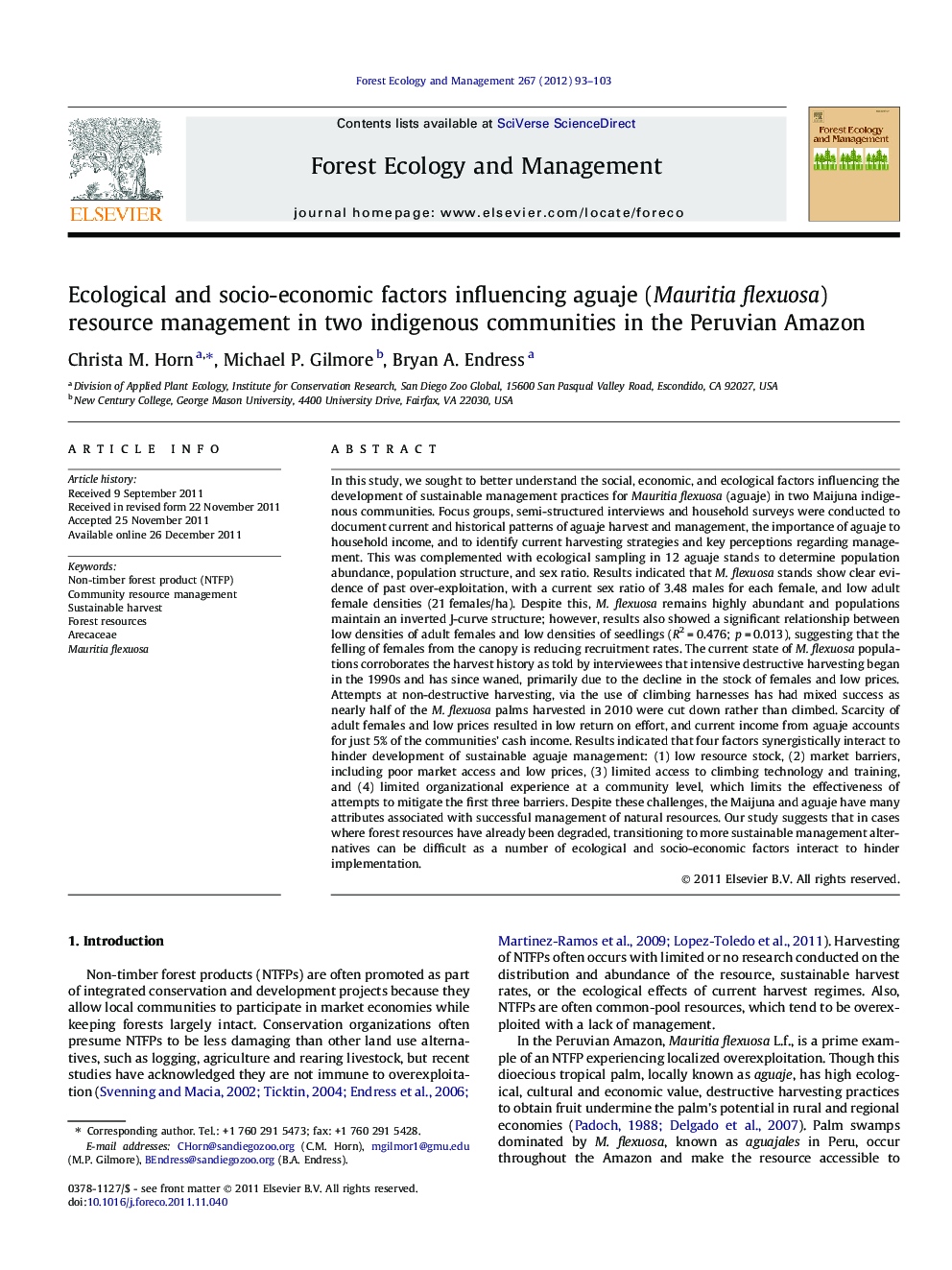| کد مقاله | کد نشریه | سال انتشار | مقاله انگلیسی | نسخه تمام متن |
|---|---|---|---|---|
| 87614 | 159258 | 2012 | 11 صفحه PDF | دانلود رایگان |

In this study, we sought to better understand the social, economic, and ecological factors influencing the development of sustainable management practices for Mauritia flexuosa (aguaje) in two Maijuna indigenous communities. Focus groups, semi-structured interviews and household surveys were conducted to document current and historical patterns of aguaje harvest and management, the importance of aguaje to household income, and to identify current harvesting strategies and key perceptions regarding management. This was complemented with ecological sampling in 12 aguaje stands to determine population abundance, population structure, and sex ratio. Results indicated that M. flexuosa stands show clear evidence of past over-exploitation, with a current sex ratio of 3.48 males for each female, and low adult female densities (21 females/ha). Despite this, M. flexuosa remains highly abundant and populations maintain an inverted J-curve structure; however, results also showed a significant relationship between low densities of adult females and low densities of seedlings (R2 = 0.476; p = 0.013), suggesting that the felling of females from the canopy is reducing recruitment rates. The current state of M. flexuosa populations corroborates the harvest history as told by interviewees that intensive destructive harvesting began in the 1990s and has since waned, primarily due to the decline in the stock of females and low prices. Attempts at non-destructive harvesting, via the use of climbing harnesses has had mixed success as nearly half of the M. flexuosa palms harvested in 2010 were cut down rather than climbed. Scarcity of adult females and low prices resulted in low return on effort, and current income from aguaje accounts for just 5% of the communities’ cash income. Results indicated that four factors synergistically interact to hinder development of sustainable aguaje management: (1) low resource stock, (2) market barriers, including poor market access and low prices, (3) limited access to climbing technology and training, and (4) limited organizational experience at a community level, which limits the effectiveness of attempts to mitigate the first three barriers. Despite these challenges, the Maijuna and aguaje have many attributes associated with successful management of natural resources. Our study suggests that in cases where forest resources have already been degraded, transitioning to more sustainable management alternatives can be difficult as a number of ecological and socio-economic factors interact to hinder implementation.
► An ecological and socioeconomic analysis of management of Mauritia flexuosa fruit.
► Skewed sex ratio and low female density caused by overexploitation limit resource use.
► Current aguaje harvest and reliance for income are low; hunting is primary income.
► Four factors interact to inhibit management, mainly by lowering return on effort.
► Solutions should leverage cultural and hunting interests in aguaje to focus on stock improvement.
Journal: Forest Ecology and Management - Volume 267, 1 March 2012, Pages 93–103